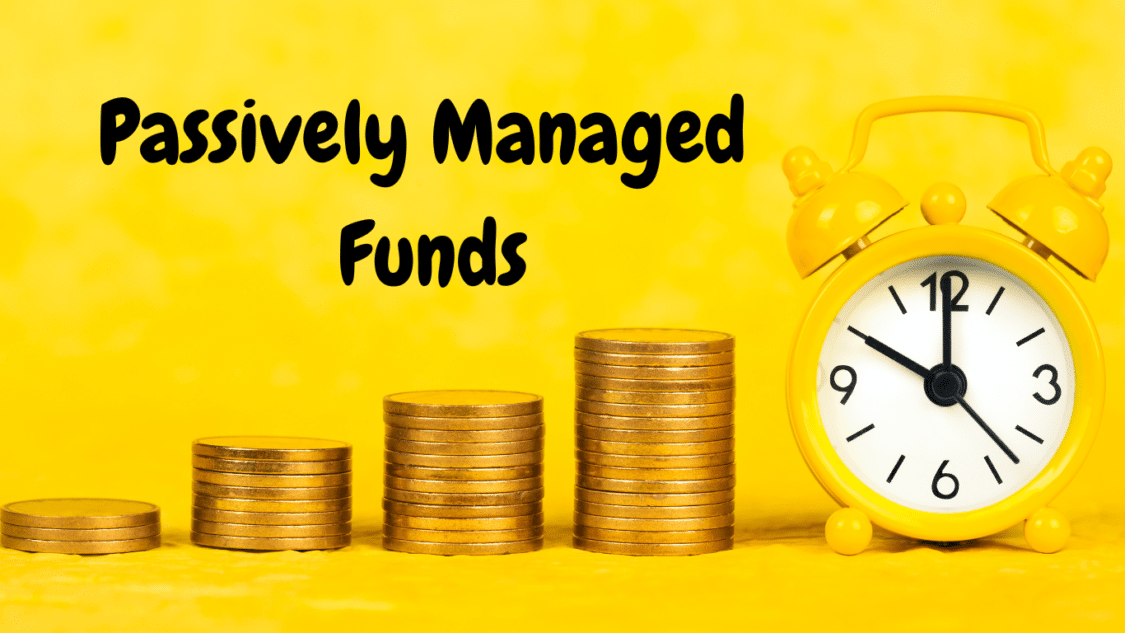- What are actively managed funds?
- What are the pros of actively traded funds?
- What are the cons of actively traded funds?
- What are passively managed funds?
- What are the pros of passively managed funds?
- What are the cons of passively managed funds?
Actively and passively managed funds are the categories under which any investment can fall. The main difference between them is the trading approach. Understanding each technique’s pros and cons is essential to decipher which investment strategy works best for you.
What are actively managed funds?

Actively managed funds, as its name gives off, are funds where the portfolio manager is hands-on. They are also commonly known as exchange-traded funds. In this approach, the portfolio manager aims to beat the market and is, therefore, regularly making trades and trying its hardest to take advantage of short-term price changes.
What are the pros of actively traded funds?
In actively traded funds, the main benefit is the potential to beat the market. They provide investors with the potential for higher returns compared to passively managed funds. This investment approach is also known for its flexibility; its opportunities are unavailable with passively managed funds. Active fund managers use a variety of tactics to minimize losses and collect taxes as effectively as possible.

What are the cons of actively traded funds?
Most actively traded funds come with higher fees. This is due to all the work that is involved in this approach. On average, the annual expense ratio is 1.4%. You will nearly always have short-term capital gains taxed higher as opposed to long-term capital gains because active fund managers routinely buy and sell assets (you must hold an investment for at least a year to qualify for a low rate).
What are passively managed funds?

A passively managed fund is an approach that requires close to no active management. The main goal of passively managed funds is to match the market. If you’re searching for a long-term investment, then passively managed funds are your best bet.
What are the pros of passively managed funds?
When purchasing a passive fund that tracks a market index, you always know exactly what the fund is invested in. The fees in passively managed funds are known to be lower than the norm. The average passive fund has an expense ratio of 0.6%. This fee is almost half of what active funds charge. Passive funds are not managed as intensely as active ones because passive funds are rarely traded.
What are the cons of passively managed funds?
Beating the market with active funds is possible; however, with a passive strategy, it’ll only happen sometimes. Passive funds provide investors with less flexibility. It is not an approach that aims for short-term opportunities outside its specific index. Therefore, if the index goes down, there is no step to take to limit your losses.
What is the difference between an actively and a passively managed fund?

When starting to invest your money, several things should be considered. It is essential to know the pros and cons of your choice. Next, you want to be educated on active and passive funds and decide which technique works best for you. To get the best look at each approach, you can compare their historical performance; this way, you can get an idea of which technique works best for your purposes.
It would be best to think about your risk tolerance and time horizon. Actively managed funds profit from short-term gains but incur a higher risk in exchange for the potential benefit. On the other hand, passive funds often involve less risk and are better suited to someone with a long-term strategy. Risk and reward vary depending on which category you decide on and the ultimate goal.
An actively managed fund is overseen by professional fund managers who aim to beat the market by actively selecting and trading securities based on their market research. These managers engage in a proactive approach towards making investment decisions about buying, selling, and retaining assets within the fund’s portfolio. This strategy is intended to generate higher returns than the benchmark index. They make Rephrase Investment decisions based on their proficiency and market insights, which frequently entail greater trading activity and higher costs.
On the flip side, a passively managed fund, also often known as an index fund, goes according to the performance of a particular market index like the S&P 500. In an attempt to copy the returns of the selected index rather than striving to outperform the market, passive funds maintain a diverse portfolio of assets that closely mirrors the index’s composition. As they require less research and trading activity than actively managed funds, passive funds often have lower turnover and expense ratios.
The main difference between actively and passively managed funds is the net investment approach and the decision-making level involved in the processes. Actively managed funds depend on the knowledge and judgment of the fund managers, who make investments to outperform the market. Passively managed funds, on the other hand, seek to offer broad market exposure and long-term returns that closely mirror the performance of the selected index. When choosing between actively and passively managed funds, investors must consider their risk tolerance, investment goals, time horizon, and cost concerns.
What is active and passive funds example?
Actively Managed Fund: The Growth Seekers Fund is an example of an actively managed fund where professional fund managers actively select and manage a portfolio of stocks. They consistently research, analyze market patterns, and make informed choices regarding purchasing and selling stocks, to exceed the overall market in terms of returns.
Passively Managed Fund: The Market Tracker Fund is an investment fund that operates passively to emulate the outcomes of a targeted stock market index, for example, the S&P 500. Instead of actively selecting specific stocks, the fund automatically invests in a varied group of stocks that align with the structure of the chosen index. The aim is to closely monitor the general market’s progress rather than going past it.
How do the fees and expenses compare between actively and passively managed funds?
The fees and expenses incorporated with these two funds can vary significantly. Passive funds typically feature lower expense ratios in comparison to actively managed funds. The higher payments are meant to cover the costs of research, trading, and management fees.
On the other hand, passively managed funds, such as index funds or exchange-traded funds (ETFs). The objective is to replicate the results of a particular market index. Typically, these funds have reduced costs because they do not require significant research or hands-on management.
Investors must consider all aspects of fees and expenses on their investment returns. While actively managed funds come with higher prices, they also include the potential for higher returns if the fund manager’s strategies prove successful. On the other hand, passively managed funds offer lower costs, potentially leading to higher returns over the long term, especially in more efficient markets.
Are ETFs actively or passively managed?
ETFs can be managed actively or passively. Some ETFs are passively managed since they are meant to track particular indices and duplicate their performance. These ETFs feature holdings that closely match the makeup of the underlying index and seek to give investors broad market exposure. As an alternative, there are actively managed ETFs, where financial experts make active investing choices to outperform the market or accomplish particular goals. These ETFs could have different portfolios than the index they are compared to. To establish whether an ETF is actively or passively managed, it is crucial to consider the individual ETF and its investing strategy.
Are any specific market conditions better for actively or passively managed funds?
Actively managed funds are ideal for investors who believe skilled fund managers can outperform the market. These funds work when opportunities exist to identify undervalued securities or work through volatile markets. They can appeal to those aiming for higher returns, although they come with higher risks.
Passive funds, such as ETFs or index funds, embrace a less active strategy. They are ideal for investors seeking broad market exposure and steady profits. These investment funds are appropriate for individuals looking for a more straightforward investment approach, aiming to monitor the market’s overall performance or a varied portfolio at a lower cost.
Conclusion:
Ultimately, the decision to opt for either actively or passively managed funds depends upon some factors and the investor’s individual preferences. Actively managed funds have the potential to generate greater returns since proficient fund managers proactively make investment choices utilizing their experience. Nevertheless, they frequently include increased charges and costs.
On the other hand, passively managed funds strive to copy the performance of a particular market index, providing a comprehensive market representation and lower prices. The actively and passively managed funds examples above should help you understand the concept better. Investors who prefer a low-cost, hands-off investment approach may find this a good option. In the end, it is essential for investors to thoroughly evaluate their investment choices, willingness to take risks, and personal preferences to identify the most suitable strategy that matches their requirements.
Facts About Litecoin You Should Know
For more news updates, visit our homepage now and see our latest news article. Want to learn more about trading? Visit our education page now and learn for FREE!

